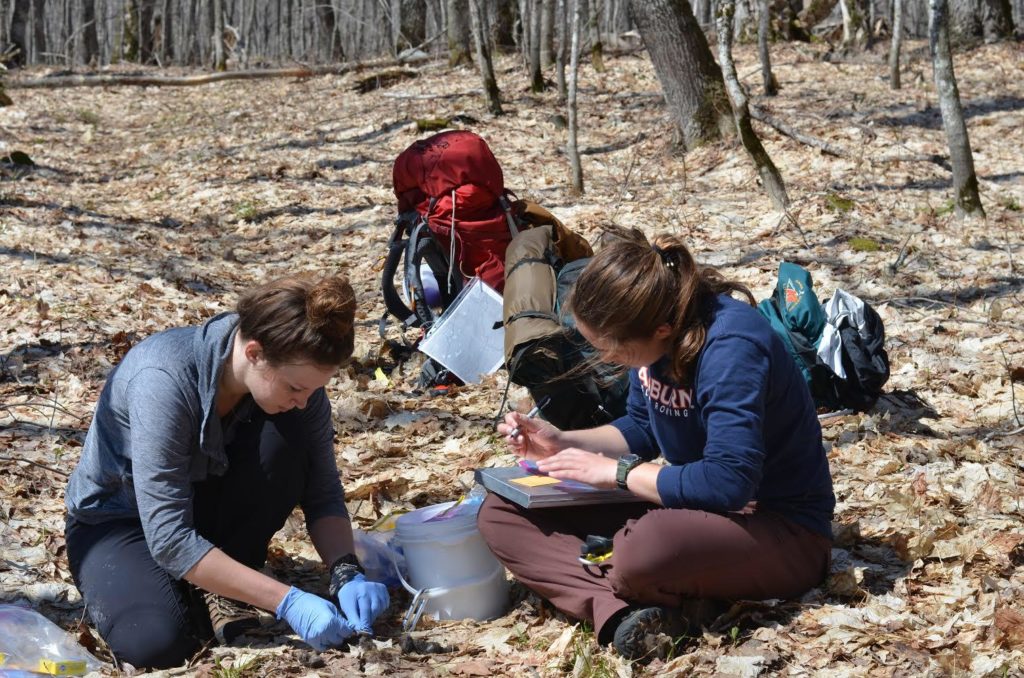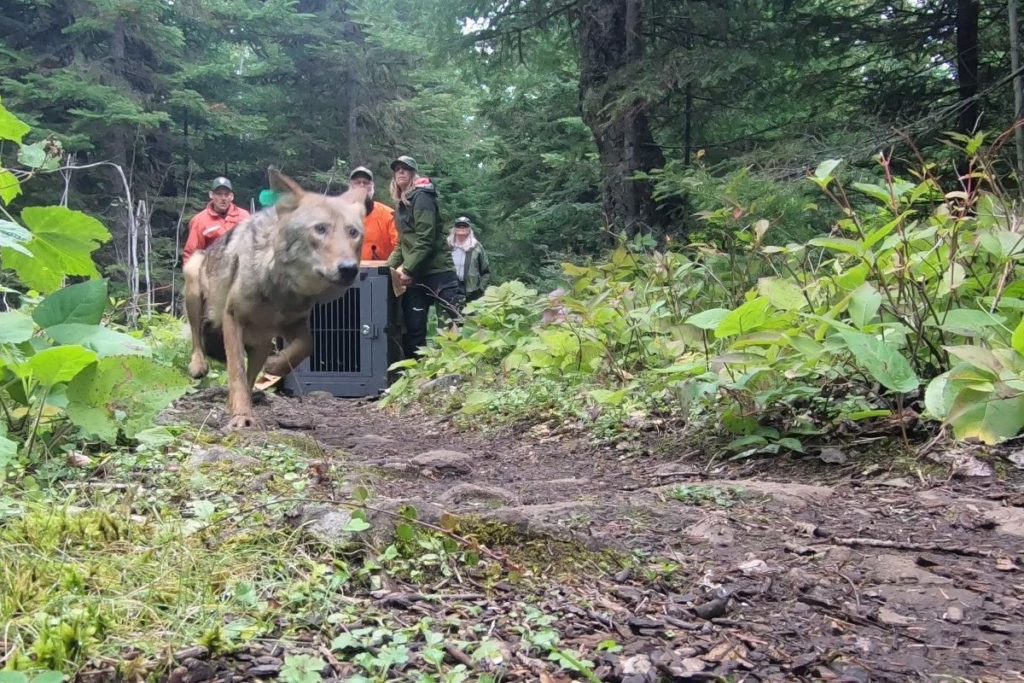
(Photo by Tyler Petroelje, National Park Service)
Researchers find that wolves transported to the island are eating the abundant moose, as well as other prey animals. The 17 wolves brought to Isle Royale over the past year by the National Park Service have adapted to the available food sources, a new study reports.
Researchers spent the summer following wolves in the National Park using GPS collars, and examining their kill sites. After documenting 381 kills, they found the animals were eating moose, beaver, and snowshoe hare. Two-thirds of the moose kills were calves.
“Restoring wolves is really about restoring integrity and resiliency to the ecosystem; making the ecosystem whole,” said Mark Romanski, Division Chief for Natural Resources at Isle Royale National Park and wolf reintroduction coordinator. “Capturing the effects on the ecosystem as a result of our management actions is paramount to measuring the success of the program.”
The project used some of the same techniques to study wolf predation that have produced impressive results at Voyageurs National Park. It combines new technology with the basic power of boots on the ground. By studying location data transmitted by collars, the scientists can find where the animals spend time, and then visit the site to see why.
The research provides a unique glimpse into the world of wolves during the growing season. While the island is home to one of the longest-running predator-prey studies in the world, that research has almost exclusively been done in the winter. This project represents the first time summer predation has been studied since research on the island began in 1958, according to longtime researcher David Mech. The National Park Service partnered with State University of New York – College of Environmental Science and Forestry on the study.

The survey will continue for the foreseeable future as the agency tracks the effect of reintroducing wolves to the National Park after the population essentially dwindled to nothing. A key reason for bringing wolves from the mainland out to the island was to control the abundant moose population, which threatened to explode, and wreak havoc on the ecosystem.
Scientists and volunteers discovered 24 moose carcasses during the study. They will be used to help an effort to reconstruct the island moose population historically. With 17 wolves reintroduced to the island, the National Park Service appears to be on track to meet its goal of bringing 20-30 of the animals within three to five years.
“Combining recent advances in technology with our knowledge of predator-prey relations will provide new insights, not only in the year-round foraging ecology of wolves on Isle Royale, but their overall role in this island ecosystem,” said Dr. Jerry Belant, Professor at SUNY-ESF and collaborative partner on wolf research.
More information:
Isle Royale Wolf Project Researchers Document Summer Predation – National Park Service
Isle Royale wolf reintroduction moves forward despite doubts and difficulties
Researchers will track Isle Royale moose movements for first time in decades

